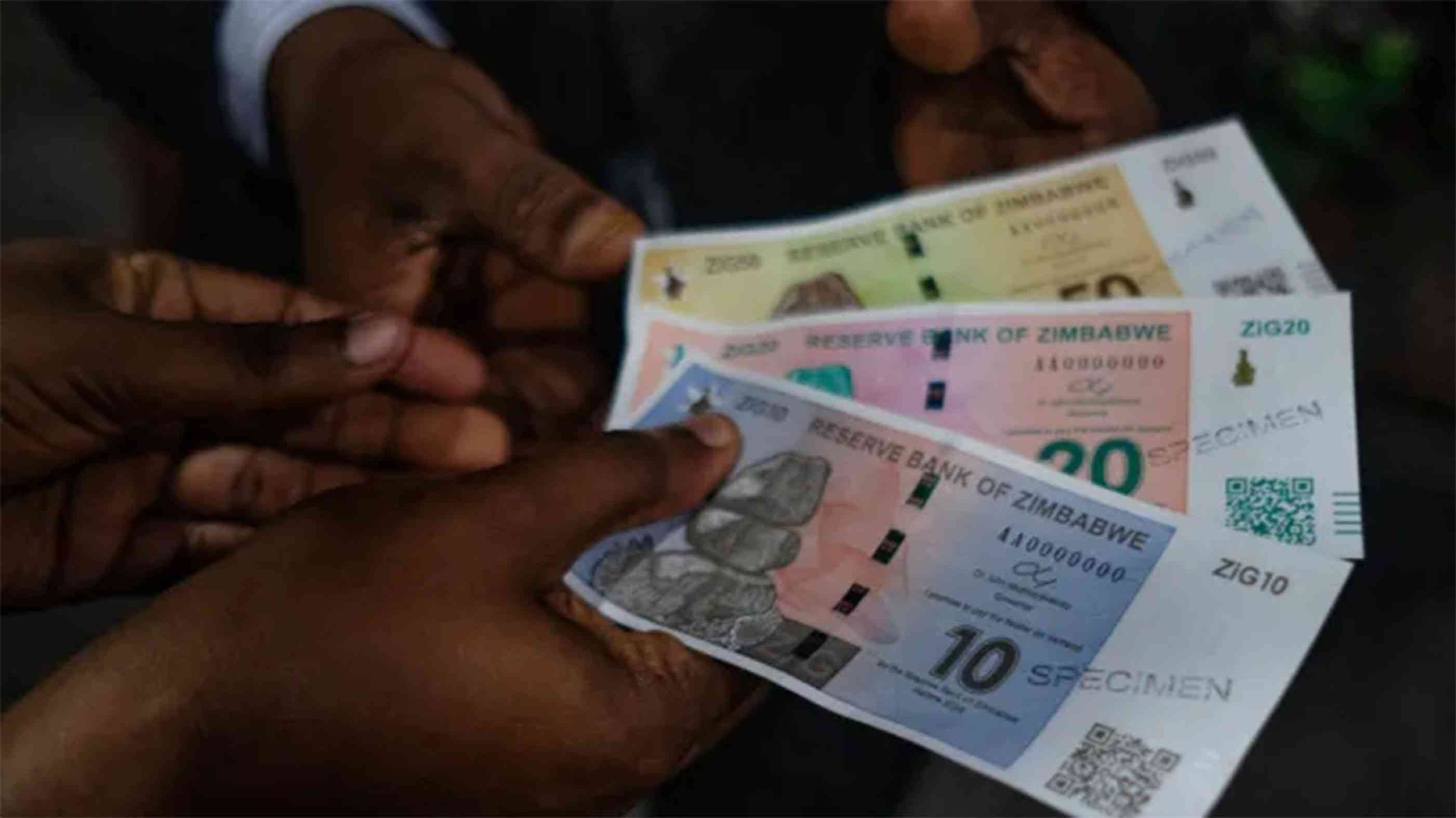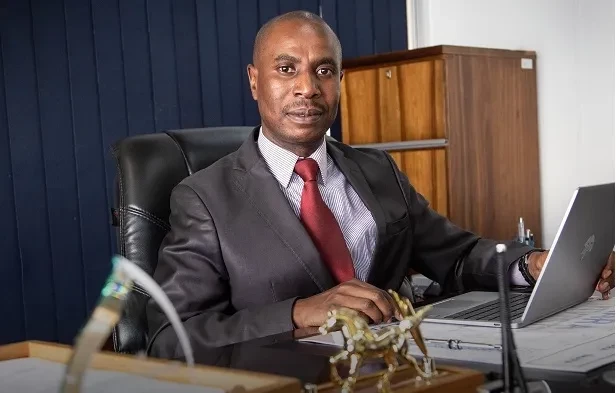
THE Reserve Bank of Zimbabwe (RBZ), under the stewardship of our esteemed new governor, John Mushayavanhu, a renowned expert in the field, presented the highly anticipated 2024 monetary policy statement (MPS) on April 5.
Guided by the primary objectives of a central bank of stabilising prices, local currency, and financial markets, I seek to analyse the proposed 2024 monetary policy measures, recognising the significant impact they will have on the economy. The focus is on the new currency, which immediately replaced the Zimbabwe dollar (ZWL).
Brief contextual analysis
After a decade of dollarisation, Zimbabwe started implementing currency reforms in October 2018, separating nostro-foreign accounts (FCA) and the local Real Transfer Gross Settlement (RTGS) balances.
In early February 2019, all the RTGS balances comprising bond notes and coins, mobile money, and bank balances were recalibrated into an RTGS dollar.
However, the RTGS dollar, which became a fully-fledged local currency after the promulgation of Statutory Instrument 142 in June 2019, has struggled to maintain its value against hard currencies like the US dollar (USD).
Between 2019 and 2023, the monetary policy, notably exchange rate management, was largely inconsistent, with the RBZ adopting and switching various mechanisms, including, among others, a free-float, managed float, fixed regime, Dutch Foreign Currency Auction System, and Willing-Buyer Willing-Seller (WBWS) interbank market. This contributed to a lack of public trust and market confidence in the local unit, thus fuelling currency substitution and depreciation.
Statistics show that in the successive years 2020, 2021, 2022, and 2023, the local unit lost 80%, 25%, 84%, and 89% of its value against the USD in the formal market, respectively.
- Chamisa under fire over US$120K donation
- Mavhunga puts DeMbare into Chibuku quarterfinals
- Pension funds bet on Cabora Bassa oilfields
- Councils defy govt fire tender directive
Keep Reading
Fast forward to 2024, the local unit (ZWL) remained on a free fall, sliding by a staggering 70%, on average, in both formal and alternative (parallel) markets, in only three months. This ZWL decline has significantly fuelled price inflation, which jumped to a worrying 55,3% in March 2024 from 26,5% in December 2023.
New structured currency
According to the RBZ, a “structured currency” is a currency that is pegged to a specific exchange rate or currency basket and backed by a bundle of foreign exchange assets like gold.
This new “structured currency” termed Zimbabwe Gold (ZiG) has immediately replaced the Zimbabwe dollar (ZWL) as legal tender for settling all transactions and debts, private and public.
The ZiG will form part of the multicurrency basket and circulate with other currencies like the United States dollar (USD). All ZWL banknotes, ZWL bank balances, ZWL mobile money accounts, and ZWL prices will be converted into ZiG using an exchange rate determined by the global price of gold (London PM fix) as of April 4 2024 and the ZWL interbank rate as of April 5 2024.
An example is provided below:
US$1 = ZWL 33,903.9916; 1 ounce of gold = 31,103.5 milligrams (mg)
As such, ZiG1 = 1 mg = US$0,0737
US$1 = ZiG13,5685 = ZWL33,903.9916 to give ZiG1 = ZWL2,498.72
Therefore, if one has ZW$100 000 in the bank, it translates to ZiG40,02 or US$2,95.
Official statistics indicate that the ZiG is backed by RBZ reserve asset holdings constituting US$100 million in cash and 2,5 tonnes of gold (worth US$185 million).
The combined US$285 million worth of reserve assets is adequate to provide full cover of reserve money in the system, totalling ZW$2,6 trillion or US$90 million equivalence.
While these reserves are adequate for now, authorities must continue accumulating more reserve assets in the coming months to reach global best practices of keeping reserves of at least three (3) months of import cover.
Zimbabwe has been gradually building gold reserves since it changed payment modalities of royalties, where 50% is now settled in the physical form of the minerals. Apart from the accumulation of gold reserves, the ZiG is backed by foreign currency (USD) reserves accumulated through involuntary export surrender requirements.
Exporting companies will continue to cede 25% of their export proceeds in exchange for ZiG. To support the value of the structured currency, it is officially reported that the Treasury will demand that 50% of corporate income taxes be settled using ZiG.
The preceding means that from now on, ZiG's money supply growth will only be limited to the growth of RBZ’s reserve asset holdings, ceteris paribus. So, hypothetically, this arrangement could restrict the ability of authorities to print ZiG willy-nilly.
If this holds, the gold-backed ZiG will become a stable currency, thus clamping ongoing rapid dollarisation of the economy.
Generally, gold is considered a safe haven investment during downturns and financial crises because of its long history of use as a store of value.
Its properties are helping it achieve this status: malleability, portability, aesthetic appeal, virtual indestructibility, universal acceptance, liquidity, and rarity.
Be that as it may, the new concept requires maximum transparency. As such, authorities must quickly adopt advanced technologies like blockchain and distributed ledger technologies.
These technologies guarantee transparency and efficiency of transactions and are even difficult to disrupt.
This ensures that all transactions are safely recorded, as no documents can be falsified since all data is immutable – anyone cannot modify it. This will circumvent the dangers of reliance on centralised, traditional database systems, which are highly prone to manipulation, may be hacked, and are susceptible to genuine human errors.
A pathway to ZiG stability also requires the central government to adopt advanced technologies in gold production tracking and monitoring to minimise the chances of gold leakages and illicit trading.
Traceability measures help curb criminality as information, such as the exact source of gold, holder of gold buying licence, and amount of taxes paid on gold exports can be collected and analysed.
The current rampant illicit gold trading, as reported by Al Jazeera’s Gold Mafia documentary, if not curtailed, will militate against the accumulation of gold reserves, which are crucial in supporting the value of the “structured currency”.
With an adverse economic outlook, for instance, currently subdued global mineral commodity prices threatening the value of export receipts coupled with the El-Niño-induced drought that has affected the 2023/24 summer cropping season, there will be enormous spending pressure on the Treasury to cushion the vulnerable groups and the economy in general.
Just like it is now the norm globally, the Treasury will need help from the RBZ (money printing) to try to avert the pending humanitarian and economic crisis.
Yet, the increase in ZiG money supply will only be permissible if enough gold reserves exist. Hence, there is a need for a whole-of-government approach to curb illicit gold trading.
Otherwise, the expected increase in government spending (import bill) will render the ZiG worthless.
Again, the ZiG concept will require frequent auditing of physical gold and USD cash reserves backing the currency by reputable and independent audit institutions.
Suppose there are no trusted audits of the quantum of gold reserves in RBZ vaults versus issued structured currency (ZiG).
In that case, the ZiG notes and coins will suffer the same fate as bond coins and notes, which RBZ reportedly introduced under a US$200 million facility provided by. The market started to reject bond coins and notes like ZW$2, ZW$5, and ZW$50 partly because authorities have printed more than they reported backing this surrogate currency, thereby causing increased depreciation pressures.
Furthermore, there is also a need to provide strong guard rails against gold leakages from the RBZ vaults, which can be caused by theft and fraud by unscrupulous public officials.
In addition, there is a need to set up public trust and investor confidence-building measures. These include, among others, massively reducing leakages of public resources by curbing public corruption, maintaining policy consistency and fiscal discipline, adopting a participatory approach to economic governance (multistakeholder consultations), and garnering adequate political will to swiftly implement a robust reform agenda (economic, governance, institutional, structural, land tenure systems reforms, etc.).
This robust reform agenda is critical to improving government efficiency, strengthening institutional and regulatory frameworks, improving social fairness and inclusion, and eliminating prevailing excessive pricing distortions fuelling the cost of production, reducing market competition, stifling innovation, and rendering the local firms globally uncompetitive.
To win the fight against import dependency and sustain a stable currency, Zimbabwe must build a strong and sustainable domestic industry.
Parting shot
The RBZ launched a structured currency termed Zimbabwe Gold (ZiG). The value of ZiG will be anchored by foreign currency accumulated through export surrender requirements and gold reserves from in-kind mining royalties.
If respected and honoured by politicians, this arrangement of backing the ZiG with reserve assets has excellent potential to bring a lasting solution to Zimbabwe’s decades-old currency conundrum.
As such, it is high time for politicians in government to cultivate adequate political will to support this initiative by maintaining policy consistency and fiscal discipline, which are prerequisites for monetary discipline.
Cognisant of current challenges bedevilling the economy, maintaining a multicurrency regime while taking a piecemeal approach to accumulate reserve assets to back ZiG is a step in the right direction. De-dollarisation is a process, not an overnight event.
In the future, the column shall outline key recommendations for the ZiG to durably stabilise.
- Sibanda is an economic analyst and researcher. He writes in his personal capacity. — [email protected] or Twitter: @bravon96











